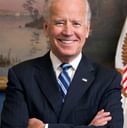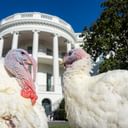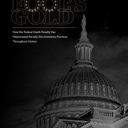
At 3:00 a.m. Central time on July 14, 2020, after his notice of execution had expired, the Federal Bureau of Prisons (BOP) strapped Daniel Lewis Lee to an execution gurney in the United States Penitentiary in Terre Haute, Indiana. With the execution chamber curtains closed, correctional officials left him there for four hours while federal prosecutors filed pleadings in a federal appeals court to lift a stay of execution they had forgotten was still in effect. When the stay was lifted at 6:36 a.m., without notifying Lee’s counsel, the BOP commenced the execution, injecting him with a fatal dose of the drug pentobarbital. He was pronounced dead at 7:07 a.m. Central time.
When Lee’s lawyer, Ruth Friedman, learned he had been executed, she released a statement to the media. “It is shameful that the government saw fit to carry out this execution during a pandemic,” she wrote. “It is shameful that the government saw fit to carry out this execution when counsel for Danny Lee could not be present with him, and when the judges in his case and even the family of his victims urged against it. And it is beyond shameful that the government, in the end, carried out this execution in haste, in the middle of the night, while the country was sleeping. We hope that upon awakening, the country will be as outraged as we are.”
July 14, 2021 marks the one year anniversary of the resumption of federal executions after a 17-year hiatus. Lee’s execution was the first of 13 federal civilian executions over the course of the next six months and two days, in a U.S. federal execution spree without parallel in the 20th or 21st centuries. The 10 federal executions in 2020 were the most by the federal government in any calendar year since 1896, during the second presidency of Grover Cleveland. And the six federal executions undertaken between Donald Trump’s electoral defeat on November 3, 2020 and the inauguration of President Joe Biden — who had pledged to work to end the federal death penalty — on January 20, 2021 were the most transition-period executions in the 232-year history of the American Presidency.
The execution spree was out of step not merely with historical presidential practices, but with what was happening in the states at the same time. All 13 federal executions took place during the longest period in 40 years without any state carrying out any execution. And the unprecedented spree exposed numerous flaws in the federal government’s use of capital punishment and the U.S. judiciary’s inability or unwillingness to enforce legal and constitutional safeguards in capital cases.
The sheer number of executions would have marked the Trump administration as an outlier, both in historical context and in the contemporary practices of the states. But the politicization of capital punishment and the numerous serious problems presented by the individual cases selected for execution made the execution spree even more strikingly aberrant. Critics charged that pursuing these executions amidst the worst pandemic in more than century exhibited a contemptuous disregard for public health, and the executions were superspreader events that sparked an outbreak of COVID-19 in the Terre Haute community, its federal prison, on federal death row, and among prison personnel, lawyers, reporters, and religious advisors involved in the executions.
Despite ongoing litigation challenging the federal government’s execution protocol, the Department of Justice announced four execution dates on June 15, 2020. That litigation continued until the early morning hours of July 14, culminating in a 2:30 am decision by the U.S. Supreme Court to vacate a lower court’s injunction and allow executions to proceed. Though Lee’s execution warrant had expired at midnight, prison officials immediately called execution witnesses back to the prison, telling them Daniel Lewis Lee’s execution would take place at 4 am. Lee’s attorneys informed the prison that a separate stay had not yet been lifted, but at 6:36 a.m. Central time, a federal appeals court granted an emergency motion from the DOJ allowing the execution to proceed. The Bureau of Prisons released a one-page document it said had provided Lee with the required legal notice of his new execution date, though he was provided no opportunity to speak with counsel or contest the BOP’s adherence to required protocols before he was executed. Two days later, Wesley Purkey’s execution followed a similar trajectory, with the Supreme Court once again issuing a ruling in the middle of the night, vacating a lower court’s injunction against the execution. It was followed by the execution of Dustin Lee Honken one day later.
These three executions, the first conducted by the federal government since March 18, 2003, set the tone for the ten that followed. Despite federal court rulings that portions of the federal execution protocol were illegal, the U.S. Supreme Court swept aside every legal obstacle to the executions. Individual prisoners presented a multitude of legal issues including anti-Native American jury bias, mental competency, intellectual disability, youth, and disproportionate sentences imposed upon co-defendants of varying culpability. The Supreme Court did not permit a hearing on any of those issues. The execution spree concluded with the post-midnight January 16, 2021 execution of Dustin John Higgs, just four days before President Joe Biden took office.
The execution spree reinforced concerns about politics and racial bias in the administration of the death penalty. Five of the seven prisoners executed before the election were white, although two thirds of the prisoners on federal death row were defendants of color. None of the victims in the pre-election cases were Black. Five of the six prisoners executed after the election were Black. Only African Americans were executed for interracial crimes.
The execution spree also deviated from numerous modern American death-penalty norms and practices. It included:
- The first execution of a woman by the federal government in 67 years;
- The execution of two prisoners accused of murders committed in their teens, the two youngest offenders executed by the federal government in 68 years;
- The first time in U.S. history the federal government executed a Native American for an offense committed against fellow tribe members on tribal lands;
- The most federal civilian executions in a single year since 1896, at a time states were carrying out the fewest executions in 37 years;
- The most executions during a presidential transition period in the history of the United States;
- Scheduling executions during the middle of the worst pandemic in more than a century and flouting public health safeguards as they were being carried out;
- Executions carried out while appeals remained pending or despite court rulings that the execution protocol and process were unlawful or unconstitutional;
- Executions of two intellectually disabled prisoners, despite no judicial consideration of their cases under clinically appropriate standards for assessing the disability;
- Executions of two mentally ill prisoners without any judicial review of their competency to be executed;
- Post-midnight executions of four prisoners after their execution dates had passed, pursuant to new execution notices of questionable legal and constitutional validity;
- Leaving one prisoner strapped to the gurney for four hours while federal prosecutors filed pleadings to vacate his stay of execution;
- Executing two prisoners who had contracted COVID-19.
On July 1, 2021, just shy of the one-year anniversary of the start of the executions, the Biden administration announced a pause on federal executions to review the Trump administration’s death-penalty regulations. While advocates welcomed the moratorium as a necessary step, they urged Biden to uphold his campaign pledge to work for the abolition of the federal death penalty, pushing the President to commute the sentences of everyone on federal death row.



